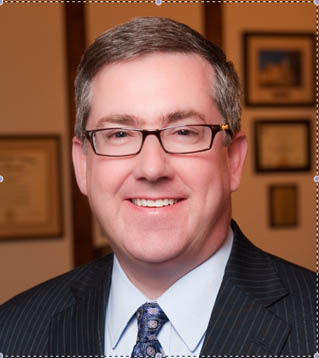June 27, 2012
Monthly letter to campus from President Schulz

Dear Faculty and Staff,
Greetings from Anderson Hall! I trust that you have had a productive summer thus far as we reach the midpoint between graduation in May and new student arrival in mid-August. As usual, I have nearly finished everything I had hoped to have done by the end of May -- so I am about a month behind!
During my time as an undergraduate student in the early 1980s, many campuses and college towns really became ghost towns during the summer. However, over the last several decades, campuses continue to add programming during the summer and the number of faculty members actively doing research has increased significantly. The days of many faculty members and campuses being “nine-month” operations are over at many public universities despite public perceptions to the contrary.
Funding for public higher education in Kansas continues to evolve, and I want to spend the majority of this month’s letter focusing on university finances. We did receive new funds which will be available to Kansas State during the upcoming year from several key legislative initiatives and a 5.5 percent tuition and fees increase.
The development of our tuition and fees proposal for the Kansas Board of Regents is a lengthy process involving a significant number of people across campus. In January of each year, a group of students, faculty, staff, and administrators work together to develop a recommendation which is brought forward to my office prior to presentation to the Regents.
This group will hear from vice presidents and deans about key funds needed for various programs and initiatives on campus, and then formulate a proposal which is a combination of tuition and fees proposals. In addition to all of the ideas submitted internally, we also monitor our tuition and fees compared with both our K-State 2025 peer institutions and other land grant institutions currently ranked in the Top 50 nationally. All this information is taken into account as we submit a final proposal to the Kansas Board of Regents, who formally vote on each institutional plan in June.
The 5.5 percent tuition and fees increase at Kansas State's Manhattan campus equates to approximately $8.49 million in new revenue. Of this, $3.45 million is going toward increased health care costs, KPERS rate increases, classified staff longevity bonuses, increased fringe benefits costs and increased utility costs. Another $1.98 million is allocated toward faculty promotion salary increases, college fees earmarked for instructional costs, faculty retention funds and funding to add additional course sections to keep pace with enrollment.
Additionally, $1 million will be used to support increased student financial aid costs, $0.3 million will be used to expand student retention programs and $0.80 million will be used to provide laboratory equipment and supplies for undergraduate courses. Finally, $0.91 million will be allocated to the Division of Continuing Education to fund the cost of delivery, development and maintenance of distance education courses. If anyone has more specific questions on how these funds will be allocated or used, please send an email note to me at kirks@k-state.edu.
In addition to new funds from tuition and fees, we also had a very successful year with new legislative initiatives, with an overall investment of $18.5 million annually in four major areas: $5 million to raise the national ranking of the Kansas State University College of Veterinary Medicine; $5 million for animal health programs; $5 million to launch research in the national interest for animal health to the Biosecurity Research Institute at K-State; and $3.5 million to support the engineering initiative to produce more engineering graduates for the state of Kansas. We also saw an increase of $5.98 million in state funds for deferred maintenance on campus, which will help continue our positive momentum in upgrading our campus teaching, research, and extension facilities.
I am very pleased that we were able to secure these new resources for this upcoming year, which will certainly help as we embark on our K-State 2025 plan. Yet, I was disappointed that we were not successful in our efforts to secure funds for a salary increase for our classified staff members, nor were we able to secure funds for unclassified staff and faculty members beyond the 2.5 percent adjustment we made in January.
There has been significant dialog with the Faculty Senate presidents, the university presidents and Kansas Board of Regents about salary issues, and there is a strong sense of commitment that we need to make a better case to our legislative colleagues on why competitive salaries are important to the future well being of our state.
The significant investment in Kansas State would not have happened without the hard work of many individuals. Specifically, I would like to thank Dr. Sue Peterson, director of government relations, and her staff who worked tirelessly as advocates for Kansas State University, and higher education in general, during this past legislative session. Additionally, Dean Ralph Richardson played a major role in ensuring that the investment in veterinary medicine was successful, as did Ron Trewyn in securing funds for animal health research and the BRI. Finally, Bruce Shubert was always available to answer financial questions about any of the proposals and how we use our resources at Kansas State.
If you have any questions about any of our finances, please don’t hesitate to send me a note. Good luck with the rest of your summer -- fall is coming quickly!
Go Cats!
Kirk
